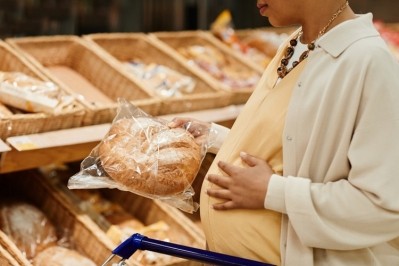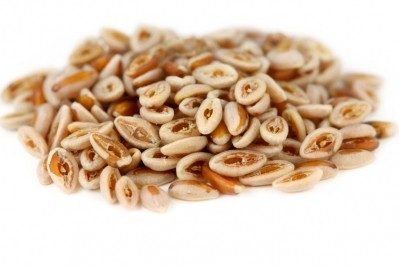Study reveals the multifaceted benefits of prebiotic snacks fortified with sustainable sources of fibre

The concept of fortifying what are often regarded ‘unhealthy’ snacks – such as potato chips and cookies – with fibre is certainly the next step in the journey towards healthier snacking that producers are striving towards.
The advantages are certainly there. Dietary fibre is known to help prevent cardiovascular disease, type 2 diabetes and obesity through its effects on the community of ‘good’ bacteria, archaebacteria, viruses and fungi (collectively known as microbiota) that live in the gut.
Sadly, typical Western diets typically lack the fibre these friendly microbes need to thrive. Changing food preferences, combined with myriad forces that are contributing to increased food insecurity, are also catalysing efforts to identify more nutritious and affordable foods.
However, the practice is not as straightforward as many would believe. The large number of potential interactions between the components of the microbiome make it challenging to define the mechanisms by which food ingredients affect community properties.
Witha view to developing prebiotic snacks, scientists from the Center for Gut Microbiome and Nutrition Research at Washington University School of Medicine in St. Louis, Missouri, investigated the dynamic relationship between the modern diet, the gut microorganisms and the effect they have on both physical and mental wellbeing.
Fibre from food waste
In 2019, the US researchers had identifiedfibre from food industry waste – such as peels, rinks and husks that producers would otherwise discard – is not only sustainable, readily available and inexpensive, but also boosts the gut microbes that obese adults tend to lack.
In the new study – published in Nature in June 2021 – the scientists tested how different preparations of these fibres can be designed to alter functions associated with specific components of the microbiome, specifically the microbiomes of adult individuals who were obese or overweight.
“Since snacks are a popular part of Western diets, we are working to help develop a new generation of snack food formulations that people will like to eat and that will support a healthy gut microbiome that affects many aspects of wellness,” said senior author Prof. Jeffrey I. Gordon, who directs the Edison Family Center for Genome Sciences & Systems Biology at Washington University School of Medicine.
“We used these snacks to supplement controlled diets that were consumed by adult individuals with obesity or who were overweight. Fibre-specific changes in their microbiomes were linked to changes in their plasma proteomes indicative of an altered physiological state.”
Playing with sustainable fibre sources
In the first phase of their research, the scientists used ‘gnotobiotic’ mice, which are raised in sterile conditions so they lack any gut microbes of their own. The guts of these mice were colonised with microbes from people with obesity, and they were put on a typical high fat, low fibre diet that is associated with weight gain.
The researchers then introduced snacks supplemented with 1) pea fibre; 2) orange fibre; and 3) barley bran to the mice’s diets. Between each introduction was a ‘washout’ period (of no snacks), which enabled the scientists to track the effects of each fibre type on the rodent’s gut microbiota.
Results found that each snack type led to an increased abundance of the genes necessary to make enzymes for digesting that particular fibre.
The second phase saw same tests being conducted on a group of 12 adult volunteers who were overweight or obese.
The volunteers began with a diet high in saturated fat and low in fibre, with the addition of snack bars supplemented with pea fibre after two weeks. Tests found similar changes in the volunteers’ gut microbiota to those they had seen in the mice.
Finally, the scientists investigated whether eating snacks containing different types of fibre would lead to more significant changes.
A group of 14 volunteers was first fed a snack containing a combination of pea fibre and inulin, a naturally occurring fibre found in bananas, artichokes and chicory root. After a washout period, they were then fed a snack containing a mix of inulin, pea fibre, orange fibre and barley bran.
Once again, the scientists were gratified with results that found that the more types of fibre introduced, the greater the abundance of bacterial genes that play a role in fibre metabolism. This had a knock-on effect in increasing the levels of proteins in the blood involved in glucose metabolism, immunity, blood coagulation, blood vessel function, and the biology of bone and nerve cells.
The next step
According to Prof Gordon, the study proved that, in principle, these fibres can be incorporated into a variety of snack formats and will benefit consumers, even those who are accustomed to a low fibre diet.
However, he said follow-on studies were necessary to find out the effect in participants beyond the study’s controlled confines.
“Follow-on studies involve administering the snack food prototypes to participants who are consuming their normal diets,” said Prof. Gordon.
“This approach can provide insights about the robustness of the effects, and dose dependency, of fibre snack formulations on the gut microbiome and host physiology under more realistic consumer settings.”
Only time will tell whether tomorrow’s snacks will be the magic bullet for global health issues like type 2 diabetes or obesity.
Studies:
Evaluating microbiome-directed fibre snacks in gnotobiotic mice and humans
Authors: O. Delannoy-Bruno, C. Desai, . A.S. Raman, et al.
Nature 595, 91–95 (2021)
doi.org/10.1038/s41586-021-03671-4
Authors: Michael L.Patnode, Zachary W.Beller, Nathan D.Han, et al.
Cell Host & Microbe, Volume 26, Issue 4, 9 October 2019, Pages 446-448









